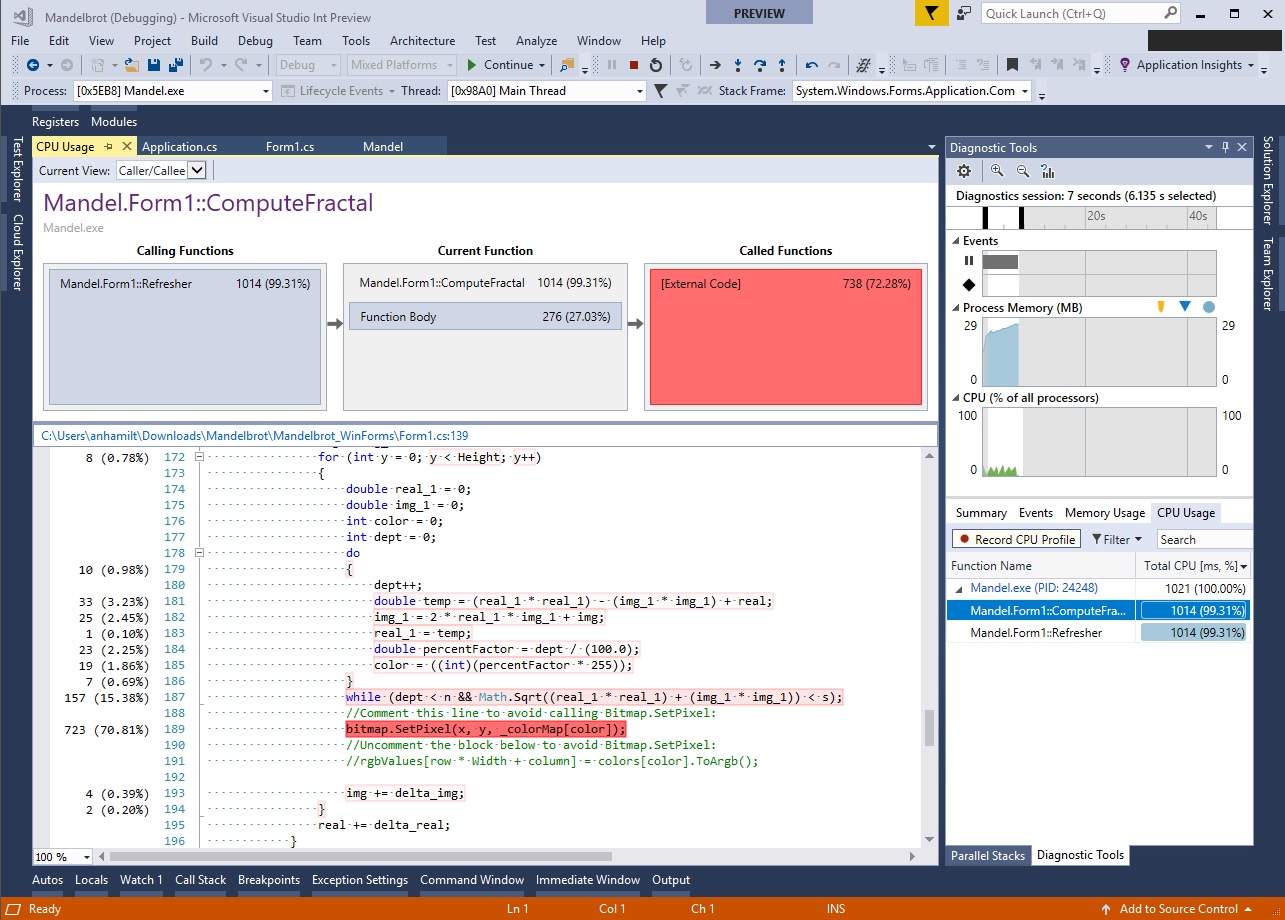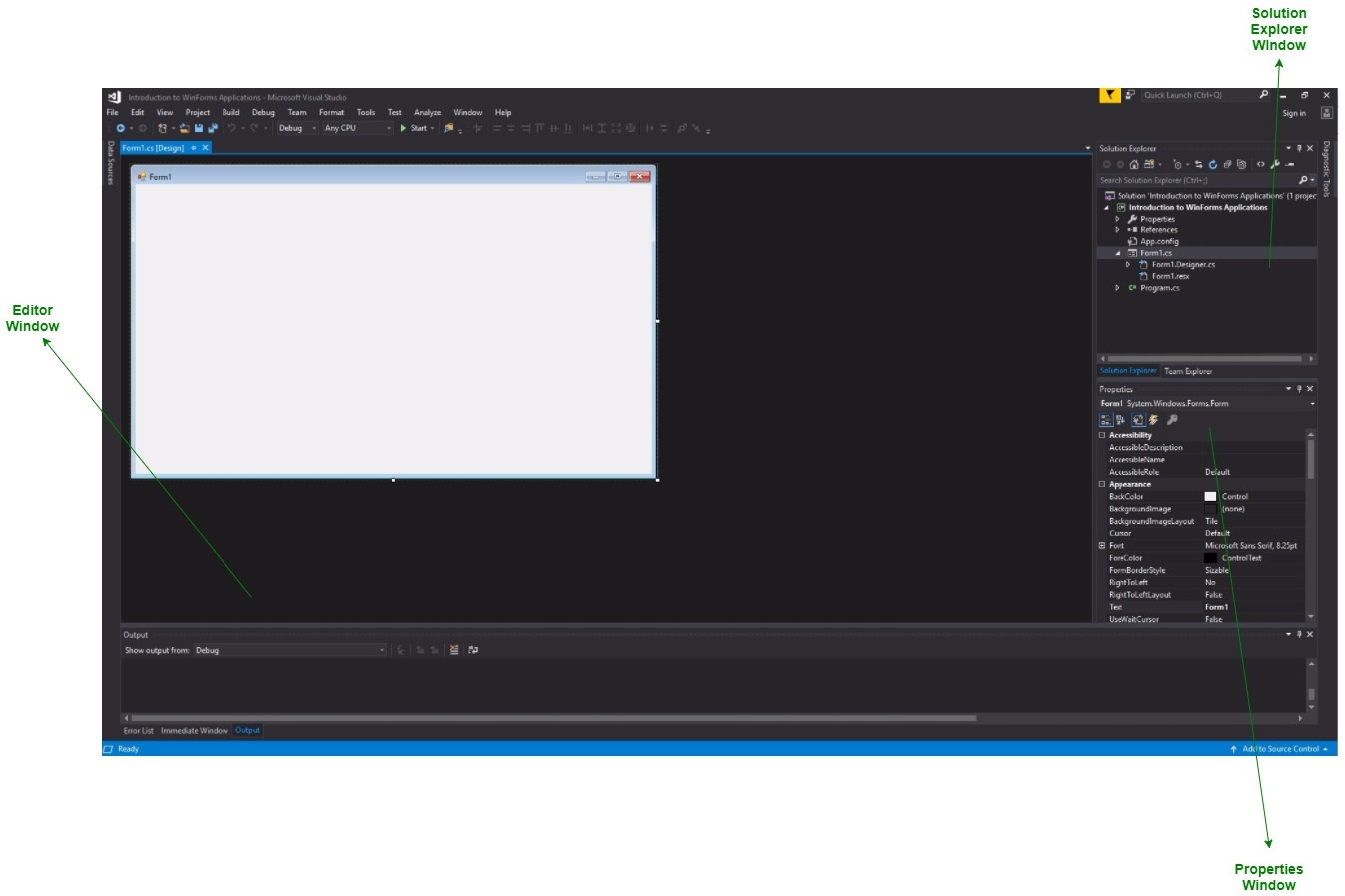

- #Visual studio 2017 windows forms application software
- #Visual studio 2017 windows forms application code
In the left side of ‘Nuget Package Manager’ window, select ‘SwashBuckle.Net45’ package.In the textbox inside ‘Nuget Package Manager’ window, type ‘SwashBuckle’.In the ‘Nuget Package Manager’ window, select ‘Browse’.In the ‘ Solution Explorer’ window, right-click the ‘webDemo’ project and click ‘Manage nuget packet’ menu item.Include SwashBuckle nugget package in the web API project.Let’s do a step-by-step walkthrough to implement Swagger using SwashBuckle: For each technology, we need some tool to implement the protocol. Swagger is a technology agnostic protocol. As a result, a JSON file will be downloaded, therefore the web API is working fine. In the browser navigation bar, type a new URL.You will notice the API operations, basically a CRUD with two GET’s, one POST, PUT and DELETE On the web page just opened, click ‘API’ link in the top menu.Click ‘Start’ button in the toolbar to execute the application.Execute the application and analyze the result.We are completing the PUT action and storing the list inside Application memory area.
#Visual studio 2017 windows forms application code

In the combobox below ‘Servers’, select ‘Local IIS’.In the right side of ‘webDemo’ properties window, click ‘Web’ page.In the ‘Solution Explorer’ window, right-click on ‘webDemo’ project and click the ‘Properties’ menu item.Configure the Web API project to use the local IIS.In the ‘New ASP.NET Web Application’ window, below ‘ASP.NET 4.5.2 Templates’, select ‘Web API’ and click the ‘Ok’ button.In the ‘Solution Name’ textbox, type ‘slDemo’ and click the ‘Ok’ button.In the ‘New Project’ dialog box, in the right side, select ‘ASP.NET Web Application (.NET Framework)’.In the ‘New Project’ dialog box, inside the left side tree view, select ‘Installed’ -> ‘Templates’ -> ‘Visual C#’ -> ‘Web’ tree items.Inside Visual Studio, select ‘File’ -> ‘New Project’ menu.Let’s build this starting solution before we go on to implement Swagger. Starting Applicationīefore we can use Swagger, we need a demo solution with a web API project. You can enable IIS as a Windows feature or server role depending if you are using a client operating system or a server one.

We’ll create an example of how we can use Swagger with VS 2017 in order to analyze the advantages and the missing features.Īs well as VS 2017, we will also need IIS (Internet Information Server) installed in the development machine for our example. It’s still in an early stage and lacking some features, however this is a great step towards the broader adoption of Swagger. VS 2017 includes support for REST API proxy creation using Swagger protocol. That’s the importance of Swagger: It’s able to do for REST APIs what WSDL has already done for web services, by allowing the creation of proxies and by making the use of web APIs much easier. This feature turns the consumption of web services into a high-level task, encapsulating all protocol details.

WSDL has been the fundamental technology that made it possible for tools and IDEs such as Visual Studio to understand web services and to create proxy classes. This is more important than it seems: It’s a game changing technology, in the same way that WSDL (Web Service Description Language) has been for web services.
#Visual studio 2017 windows forms application software
Swagger is a technology-agnostic standard that allows the discovery of REST APIs, providing a way for any software to identify the features of a REST API. Visual Studio 2017 and Swagger: Building and Documenting Web APIs - Simple Talk Skip to content


 0 kommentar(er)
0 kommentar(er)
